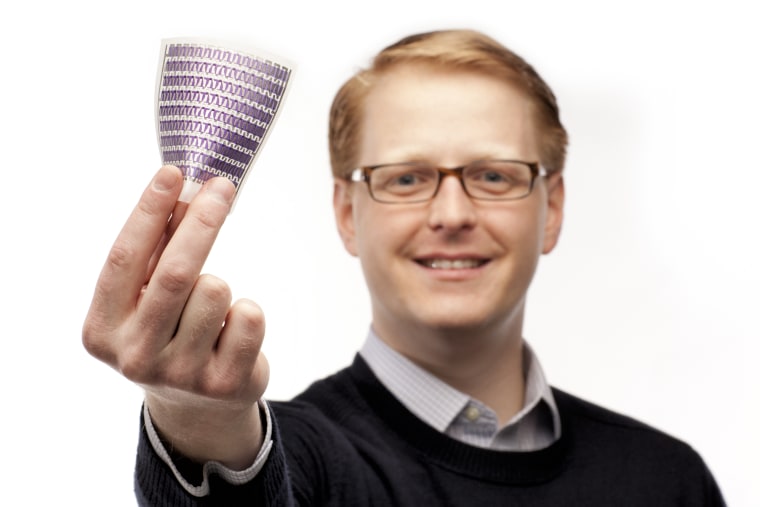Your windows, curtains and wallpaper may soon start harvesting energy from sunlight as it spills into your room thanks to a prize-winning inventor who is putting solar cells on just about any surface.
"The barriers to adoption and installation are reduced if you can really put these anywhere," Miles Barr, who received the $30,000 Lemelson-MIT Student Prize on Wednesday, told me.
Traditional solar cells such as those found on rooftops are heavy, built on rigid glass or silicon surfaces, and require specialized installation.
Barr's technology, could, for example, put solar cells on your windows and curtains, which already provide shelter and shade from the sun, turning them into a source of electricity as well.
Today, Barr works full time for the company he co-founded, Ubiquitous Energy, which is focused on deploying these types of emerging solar technologies.
The company leverages research he pioneered as a Ph.D. student at MIT that puts organic solar cells onto just about any surface via a process known as chemical vapor deposition.
"You have vapor or gases that are precursors to the thin solid film," Barr explained. "They are exposed to the substrate of your choice and they react to form a thin polymer film."
That film serves as an active component in the solar cell.
Ubiquitous Energy isn't using the specific chemical vapor deposition technology, but is developing new ways to put solar energy harvesters onto everyday products, Barr noted.
"We are thinking of putting them on windows, making them transparent, for example, or integrating them into mobile electronics," he said. "Things that might as well be harvesting energy from the light that's hitting them anyways."
These types of solar cells are less efficient than conventional photovoltaics, which typically convert between 15 and 20 percent of the sunlight that hits them into energy.
The best-performing organic solar cells, similar to the ones Barr is working with, are about 10 percent efficient. In the lab at MIT, he achieved about 2 percent efficiency.
Though he thinks he can achieve higher efficiencies with more advanced devices and materials, he noted the lighter weight and ability to put the cells anywhere are the market advantages for his technology.
For example, a stack of solar cells on strips of waterproof paper that harvest enough electricity to power a LED light could be used to bring electricity to remote, off-the-grid locations.
In addition to Barr, other Lemelson-MIT student prizes were awarded Wednesday to:
- Kevin Karsh at the University of Illinois who developed a new technique for inserting objects and special effects into photographs and videos.
- Fazel Yavari at Rensselaer Polytechnic Institute in New York who developed a new graphene sensor to detect extremely small quantities of hazardous gas.
The prizes recognize exceptionally inventive graduate students at the respective universities. The Lemelson-MIT program aims to spur young people to pursue creative lives and careers through invention.
Barr has been a creative type since childhood when he and his brother "went through a phase where we were making hovercrafts out of everything we could find," he said.
For him, the creative process is about stepping out of his personal comfort zone, embracing failure as necessary step to success, and taking ideas from anywhere.
"I'm a chemical engineer by training … but the technology that I developed has been a combination of many disparate fields including electronics, electrical engineering, physics, science, [and] chemistry."
As he transitions to the life of an entrepreneur trying to put solar cells on everything from windows and curtains to dollar bills, he knows one more field he needs to master: marketing.
"That adds an extra dimension to the inventive process," he said.
John Roach is a contributing writer for msnbc.com. To learn more about him, check out his website and follow him on Twitter. For more of our Future of Technology series, watch the featured video below.
